| Entry | Database: PDB / ID: 2j7x
|
|---|
| Title | STRUCTURE OF ESTRADIOL-BOUND ESTROGEN RECEPTOR BETA LBD IN COMPLEX WITH LXXLL MOTIF FROM NCOA5 |
|---|
 Components Components | - ESTROGEN RECEPTOR BETA
- NUCLEAR RECEPTOR COACTIVATOR 5
|
|---|
 Keywords Keywords | TRANSCRIPTION / ZINC-FINGER / NUCLEAR RECEPTOR / PHOSPHORYLATION / STEROID-BINDING / GLYCOPROTEIN / TRANSCRIPTION REGULATION |
|---|
| Function / homology |  Function and homology information Function and homology information
negative regulation of behavior / cellular response to magnetism / response to bisphenol A / ESR-mediated signaling / response to human chorionic gonadotropin / PIP3 activates AKT signaling / amygdala development / estradiol binding / Extra-nuclear estrogen signaling / hormone-mediated apoptotic signaling pathway ...negative regulation of behavior / cellular response to magnetism / response to bisphenol A / ESR-mediated signaling / response to human chorionic gonadotropin / PIP3 activates AKT signaling / amygdala development / estradiol binding / Extra-nuclear estrogen signaling / hormone-mediated apoptotic signaling pathway / epithelial cell maturation involved in prostate gland development / Sertoli cell proliferation / PI5P, PP2A and IER3 Regulate PI3K/AKT Signaling / prostate gland development / response to genistein / Nuclear Receptor transcription pathway / steroid hormone binding / Sertoli cell development / negative regulation of androgen receptor signaling pathway / prostate gland epithelium morphogenesis / response to salt / response to insecticide / peroxisome proliferator activated receptor binding / heterocyclic compound binding / positive regulation of epidermal growth factor receptor signaling pathway / nuclear estrogen receptor activity / negative regulation of feeding behavior / response to dexamethasone / female gonad development / androgen receptor signaling pathway / response to testosterone / hypothalamus development / uterus development / hormone binding / vagina development / nuclear steroid receptor activity / negative regulation of reactive oxygen species metabolic process / estrogen response element binding / regulation of signal transduction / nuclear receptor-mediated steroid hormone signaling pathway / behavioral fear response / positive regulation of DNA-binding transcription factor activity / estrous cycle / ovarian follicle development / response to hormone / estrogen receptor signaling pathway / steroid binding / negative regulation of insulin receptor signaling pathway / cerebellum development / epithelial cell proliferation / response to activity / response to nicotine / response to nutrient levels / promoter-specific chromatin binding / negative regulation of smooth muscle cell proliferation / cellular response to estradiol stimulus / protein-DNA complex / brain development / response to estrogen / vasodilation / male gonad development / cellular response to xenobiotic stimulus / nuclear receptor activity / neuron migration / negative regulation of epithelial cell proliferation / transcription corepressor activity / insulin receptor signaling pathway / response to estradiol / glucose homeostasis / actin cytoskeleton / regulation of cell population proliferation / cellular response to lipopolysaccharide / DNA-binding transcription activator activity, RNA polymerase II-specific / response to ethanol / perikaryon / sequence-specific DNA binding / negative regulation of neuron apoptotic process / learning or memory / cell population proliferation / positive regulation of ERK1 and ERK2 cascade / positive regulation of apoptotic process / RNA polymerase II cis-regulatory region sequence-specific DNA binding / response to xenobiotic stimulus / negative regulation of cell population proliferation / neuronal cell body / chromatin binding / regulation of transcription by RNA polymerase II / chromatin / positive regulation of DNA-templated transcription / perinuclear region of cytoplasm / enzyme binding / negative regulation of transcription by RNA polymerase II / positive regulation of transcription by RNA polymerase II / mitochondrion / extracellular space / DNA binding / RNA binding / zinc ion binding / nucleoplasm / nucleusSimilarity search - Function : / Estrogen receptor beta-like, N-terminal / Estrogen receptor beta/gamma / Estrogen receptor beta / Anticodon-binding domain superfamily / Estrogen receptor/oestrogen-related receptor / : / Retinoid X Receptor / Retinoid X Receptor / Nuclear hormone receptor ...: / Estrogen receptor beta-like, N-terminal / Estrogen receptor beta/gamma / Estrogen receptor beta / Anticodon-binding domain superfamily / Estrogen receptor/oestrogen-related receptor / : / Retinoid X Receptor / Retinoid X Receptor / Nuclear hormone receptor / Nuclear hormones receptors DNA-binding region signature. / Zinc finger, nuclear hormone receptor-type / Double treble clef zinc finger, C4 type / Nuclear hormone receptors DNA-binding domain profile. / c4 zinc finger in nuclear hormone receptors / Nuclear hormone receptor, ligand-binding domain / Nuclear hormone receptor-like domain superfamily / Ligand-binding domain of nuclear hormone receptor / Nuclear receptor (NR) ligand-binding (LBD) domain profile. / Ligand binding domain of hormone receptors / Zinc finger, NHR/GATA-type / Orthogonal Bundle / Mainly AlphaSimilarity search - Domain/homology |
|---|
| Biological species |   RATTUS NORVEGICUS (Norway rat) RATTUS NORVEGICUS (Norway rat)
 HOMO SAPIENS (human) HOMO SAPIENS (human) |
|---|
| Method |  X-RAY DIFFRACTION / X-RAY DIFFRACTION /  SYNCHROTRON / SYNCHROTRON /  MOLECULAR REPLACEMENT / Resolution: 2.1 Å MOLECULAR REPLACEMENT / Resolution: 2.1 Å |
|---|
 Authors Authors | Pike, A.C.W. / Brzozowski, A.M. / Hubbard, R.E. / Walton, J. / Bonn, T. / Thorsell, A.-G. / Engstrom, O. / Ljunggren, J. / Gustaffson, J.-A. / Carlquist, M. |
|---|
 Citation Citation |  Journal: To be Published Journal: To be Published
Title: Structure of Agonist-Bound Estrogen Receptor Beta Lbd in Complex with Lxxll Motif from Ncoa5
Authors: Pike, A.C.W. / Brzozowski, A.M. / Hubbard, R.E. / Walton, J. / Bonn, T. / Thorsell, A.-G. / Engstrom, O. / Ljunggren, J. / Gustaffson, J.-A. / Carlquist, M. |
|---|
| History | | Deposition | Oct 17, 2006 | Deposition site: PDBE / Processing site: PDBE |
|---|
| Revision 1.0 | Nov 7, 2006 | Provider: repository / Type: Initial release |
|---|
| Revision 1.1 | Jul 13, 2011 | Group: Refinement description / Version format compliance |
|---|
| Revision 1.2 | Dec 13, 2023 | Group: Data collection / Database references ...Data collection / Database references / Other / Refinement description
Category: chem_comp_atom / chem_comp_bond ...chem_comp_atom / chem_comp_bond / database_2 / pdbx_database_status / pdbx_initial_refinement_model
Item: _database_2.pdbx_DOI / _database_2.pdbx_database_accession / _pdbx_database_status.status_code_sf |
|---|
|
|---|
 Yorodumi
Yorodumi Open data
Open data Basic information
Basic information Components
Components Keywords
Keywords Function and homology information
Function and homology information
 HOMO SAPIENS (human)
HOMO SAPIENS (human) X-RAY DIFFRACTION /
X-RAY DIFFRACTION /  SYNCHROTRON /
SYNCHROTRON /  MOLECULAR REPLACEMENT / Resolution: 2.1 Å
MOLECULAR REPLACEMENT / Resolution: 2.1 Å  Authors
Authors Citation
Citation Journal: To be Published
Journal: To be Published Structure visualization
Structure visualization Molmil
Molmil Jmol/JSmol
Jmol/JSmol Downloads & links
Downloads & links Download
Download 2j7x.cif.gz
2j7x.cif.gz PDBx/mmCIF format
PDBx/mmCIF format pdb2j7x.ent.gz
pdb2j7x.ent.gz PDB format
PDB format 2j7x.json.gz
2j7x.json.gz PDBx/mmJSON format
PDBx/mmJSON format Other downloads
Other downloads 2j7x_validation.pdf.gz
2j7x_validation.pdf.gz wwPDB validaton report
wwPDB validaton report 2j7x_full_validation.pdf.gz
2j7x_full_validation.pdf.gz 2j7x_validation.xml.gz
2j7x_validation.xml.gz 2j7x_validation.cif.gz
2j7x_validation.cif.gz https://data.pdbj.org/pub/pdb/validation_reports/j7/2j7x
https://data.pdbj.org/pub/pdb/validation_reports/j7/2j7x ftp://data.pdbj.org/pub/pdb/validation_reports/j7/2j7x
ftp://data.pdbj.org/pub/pdb/validation_reports/j7/2j7x
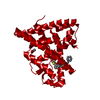
 Links
Links Assembly
Assembly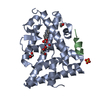
 Components
Components

 HOMO SAPIENS (human) / References: UniProt: Q9HCD5
HOMO SAPIENS (human) / References: UniProt: Q9HCD5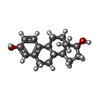


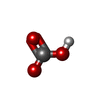





 X-RAY DIFFRACTION / Number of used crystals: 1
X-RAY DIFFRACTION / Number of used crystals: 1  Sample preparation
Sample preparation SYNCHROTRON / Site:
SYNCHROTRON / Site:  ESRF
ESRF  / Beamline: ID14-4 / Wavelength: 0.932
/ Beamline: ID14-4 / Wavelength: 0.932  Processing
Processing MOLECULAR REPLACEMENT
MOLECULAR REPLACEMENT Movie
Movie Controller
Controller




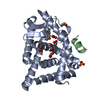
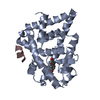
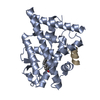
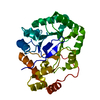
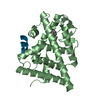


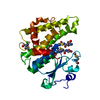
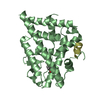

 PDBj
PDBj













